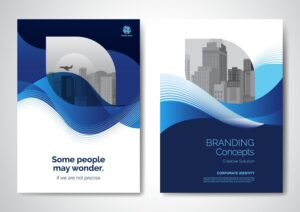Introduction
In digital marketing, content is the backbone of every brand’s online presence. But when it comes to strategy, one question always arises: should you focus on long-form content or short-form content? Both types have their advantages, and the choice often depends on your goals, audience, and platform. In this blog, we’ll break down the benefits of each and help you decide what works best for your brand.
What is Long-Form Content?
Long-form content typically ranges from 1,000 to 3,000+ words. It’s detailed, research-driven, and designed to provide in-depth value. Examples include:
-
Comprehensive blog posts
-
Case studies
-
Whitepapers
-
Guides and eBooks
Benefits of Long-Form Content
-
Better SEO performance – Search engines often favor detailed, keyword-rich articles.
-
Establishes authority – It positions your brand as an industry expert.
-
Higher engagement – Readers who want detailed knowledge spend more time on the page.
-
More backlink potential – Quality resources are often cited by other sites.

What is Short-Form Content?
Short-form content generally consists of 300–800 words or bite-sized pieces made for quick consumption. Examples include:
-
Short blog posts
-
Social media updates
-
Email newsletters
-
Product descriptions
Benefits of Short-Form Content
-
Quick to consume – Perfect for today’s fast-paced audience.
-
Great for mobile users – Easy to read on-the-go.
-
Higher publishing frequency – Brands can push out more content in less time.
-
Boosts engagement on social platforms – Short content works well for platforms like Instagram, Twitter, and LinkedIn.
Long-Form vs Short-Form: Which Works Best?
There’s no one-size-fits-all answer. The right choice depends on:
-
Audience Behavior – If your audience prefers quick answers, short-form is best. For detailed insights, go long-form.
-
Business Goals – Want traffic and SEO ranking? Go for long-form. Need social engagement? Short-form wins.
-
Content Platform – Blogs and websites benefit from long-form, while social platforms thrive on short-form.
The Ideal Strategy: A Mix of Both
The most effective content strategy blends long-form and short-form. For example, publish a detailed guide or case study on your website, then repurpose it into short social posts or email snippets. This way, you maximize reach and engagement.
Conclusion
When debating long-form vs short-form content, the real answer is balance. Use long-form content to build authority and boost SEO, and short-form to engage, promote, and connect quickly with your audience. By combining both, you’ll create a powerful content strategy that delivers lasting results.
Need professional help with your content strategy? Contact Digitor today to create content that fits your brand.
Explore more related articles to deepen your understanding
Best Fonts for Branding: Create a Lasting Visual Identity
SEO Content Writing: A Complete Guide for BeginnersDoes Google use Cloudflare
Content Writing Basics: A Beginner’s Guide to Effective Writing







